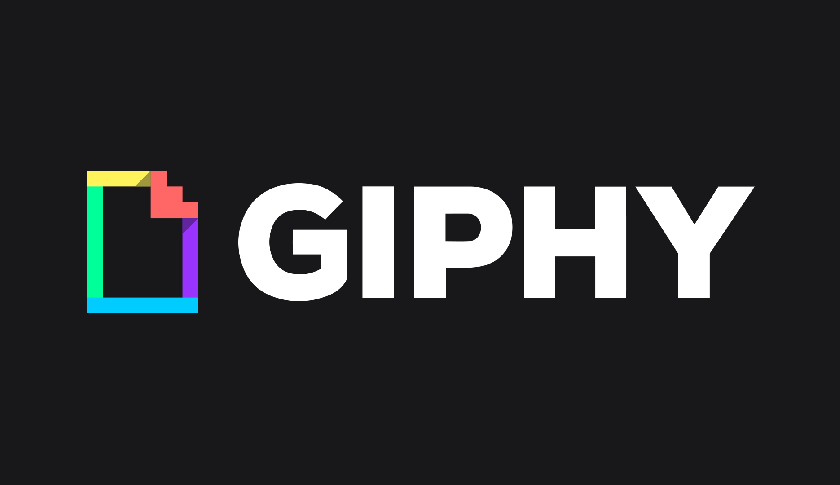Category: Business
Chinese Bike-Sharing Startup Mobike Is Riding To Its First Stop In Singapore
China’s bike-sharing startup Mobike is exploring new opportunities as it plans to introduce its bike-sharing services in Singapore. Co-founded by a former Uber executive, Mobike is offering a new mode of transportation for short distances traveling using the electronic bike.
Mobike is also the world’s first station-less bike sharing service, where users can just book and pick up an electric bike, ride it for short distances before returning it to any public bicycle parking. But ultimately this is enabled as the bike-lock is activated by scanning a QR code.
With Mobike, it will not only solve the individual’s personal transportation problem but more importantly, the electric bike will incarnate a revolutionary lifestyle which is much healthier, reducing congestion and pollution that is caused by transportation.
This also goes in lieu with Singapore’s development as the city-state is pushing to become a cycling-friendly city, evident with the government National Cycling Plan that aims to create a cyclist-friendly, extensive well-connected off-road network that will provide safe and healthy cycling for all.
Florian Bohnert, Mobike’s Singapore general manager who has moved to the country for its expansion said that it has been in talks with universities and polytechnics in Singapore to start the service on their campuses.
“Students can cycle from classroom to classroom within the campus, or from the campus to a nearby MRT station, or even a neighboring town.” Florian Bohnert told The Straits Times.
Mobike uses their own manufactured bikes whereby the bikes consist of a full aluminum frame which will prevent rust, airless tires and a crank-and-shaft transmission with the drivetrain concealed, that will prevent users to deal with the traditional issue of chains popping off. Furthermore, the bike locks charge themselves when the user pedals. These features result in the bikes being maintenance-free for 4 years.
In China, the startup is locked in battle with local rivals like Ofo which are backed by the support of Xiaomi and Didi Chuxing, the most dominant ride-hailing. However though Mobike has only found its footprints in four cities of Shenzhen, Guangzhou, Shanghai, and Beijing, but the startup has found favor with investors like Tencent, Sequoia Capital, and Singapore Vertex.
By Vivian Foo, Unicorn Media
Giphy Raises Additional US$72 Million In Funding, Now Values At US$600 Million
Looking at Mario, it is perculiar how such a simple looping animated image featuring viral moments or pop cultural references manages to be so eye-catching.
Known as a GIF, which is short for Graphics Interchange Format, the animated image has exploded in popularity and successfully drawn in big interest from users and investors. As Giphy, the platform for all things GIF has announced today that it has raised US$72 million in its round of equity funding. The funding was led by Draper Fisher Jurvetson, Institutional Venture Partners, and China Media Capital as well as existing backers Betaworks, RRE Ventures, Lightspeed Venture Partners, and Alphabet Inc’s GV.
Following this, the startup based in New York has now doubled to a total funding of US$150 million as well as a valuation reported at US$600 million. As reported by The Wall Street Journal, this growth in funding and valuation came after the startup made an announcement last week that its GIFs has a daily viewership of 100 million people and that it serves one billion GIFs per day through its search engine, apps, and partnership deals which includes Viacom, Disney, and Major League Baseball. In totality, this culminates to about 2 million hours of GIFs viewed each day.
Understanding the never-ending thirst for silent, short videos ranging from silly to serious matters, the company was founded in February 2013 by Alex Chung and Jace Cooke. Although the company started out as part of a Hacker-in-Residence program at betaworks, it has always held the mission to make GIFs more searchable and shareable. The platform has since then been GIF-orientated, providing GIF-based products, including the ability to turn video into a GIF, Giphy Keys – a GIFkeyboard, and Giphy Cam available App Store, which is a portfolio of tools to help media companies publish GIF contents.
Additionally, the company also has a team in Giphy Studios that helps broadcast GIFs primarily turning media events like the Oscars or the Emmys into a library of GIFs, which is done in real-time. Furthermore, Giphy offers all these tools and resources to individual publishers and media companies for free, without any copyright restraints. In other words, to date, Giphy has not activated any form of monetization and is operating on a zero revenue basis.
Though it may seem like that this lack of exchange does not fare well for Giphy’s future revenue streams, but Giphy founder and CEO, Alex Chung sees a huge opportunity in advertising, saying at the TC Disrupt SF in September that “In a world where mobile messaging needs a native ad format, GIF is the perfect format for that.” He further elaborated that the mobile platform has yet to land on a native advertising format and his ambitions for GIFs to fill that role. It would be done in a way where brands could insert their products into intimate conversations, done so in a format that would feel natural and relevant.
But for now, Giphy says that it is not going to flip the monetization switch as long as the service continues to grow and investments flows in. For this round of funding, Giphy intends to use the funds to hire more editorial staff as well as in projects for the improvement of its technical capabilities.
On the same not, Giphy has also seized on the popularity of Vine, the six-second video service that began shutting down last week, offering users the option to convert Vine videos into GIFs, with the provided option to download the original file, audio and all from Giphy at any time.
For more information, please visit http://giphy.com/
By Vivian Foo, Unicorn Media
Starbreeze Acquires Nozon, A Belgian Visual Effects Studio And PresenZ Technology Creator To Improve VR Cinematic Experience
With the future of VR unfolding at the moment, many have clearly seen the use of the technology playing out on gaming computers and home consoles. Starbreeze, a company based in Stockholm, Sweden similarly sees the potential of VR. But instead of going for 3D game engines like most companies, the startup has, on the other hand, decided to pursue what fits into their mode of production – that is taking VR on a high-end headset, designed for amusement parks and IMAX theaters, in what known today as the StarVR headset.
Consolidating the company’s status in the VR scene, this week the company has made some major new acquisition – announcing last Tuesday that it has purchased Nozon, a Belgium-based visual effects studio for 7.1 MEUR, which roughly translates to about US$7.78 million. The deal was closed with 4.6 MEUR (approximately US$5.05 million) in cash with the remaining 2.5 MEUR as newly issued Starbreeze B-shares, worth about US$ 2.74 million. Additionally, both parties have also agreed on a capped ten-year earn out for Nozon founders based on PresenZ future financial performance.
Looking at Nozon, it is a VFX and 3D animation company that produces feature films, where among some of the company’s portfolios include animated feature films such as Asterix, the Mansion of Gods, and Minuscule which has won the César for Best Animated Movie in 2015. Yet essentially, the company’s emphasis is on developing VR cinematic using an in-house tool, PresenZ which was the tool that ultimately led to this partnership between Starbreeze and Nozon.
Introduced in 2015, PresenZ is a revolutionary technology, known for its function to be able to deliver high-quality blockbuster computer graphics (CG). Its main feature, however, lies in its ability to create an interactive parallax in virtual reality which allows viewers to move their heads with a six degrees of freedom in a pre-rendered animated video. Essentially, it enables a degree of positional tracking and when being in a movie scene. In other words, the tool facilitates a better immersion experience. Just imagine looking down the rabbit hole with Alice in Wonderland.
“PresenZ technology for multiple virtual reality applications will allow for room scale scanning and virtualization, and high-quality computer graphics rendering at an almost movie-level polygon count. The technology’s parallax capabilities will greatly complement the high fidelity of the StarVR HMD with its 210-degree field of view,” said Bo Andersson Klint, the CEO of Starbreeze.
Besides that, Starbreeze‘s immersive virtual reality cinematic experiences are scheduled to be out later in the year. As the company has already partnered with IMAX to deliver new cinematic video content to location-based pods in movie theaters and shopping malls. On the same vein, with Facebook announcing its VR social networking experience last month and EXA Global, the first VR theme park in Southeast Asia slated to launch early next year, the world is becoming lively with virtual reality and its endless possibilities.
“The future of VR is undefined but it is easy to imagine with this technology, where a space can be scanned and rendered in high-quality CGI. And with Nozon joining Starbreeze family, it is possible to imagine with the applications it houses that you could render a space like the Louvre in Paris or Saint Mark’s Basilica in Venice, and provide interactive guided tours.” the CEO of Starbreeze further adds.
For more information, please visit http://www.starbreeze.com/
By Vivian Foo, Unicorn Media
Snapchat Targets To Raise US$4 Billion In IPO
According to a report by Bloomberg, instant messaging app, Snapchat is reportedly planning to raise a targeted amount of US$4 billion in its initial share sale.
With this, the sale may value Snapchat higher than its initial US$20 billion valuation that it has received in its earlier funding this year, at an amount of US$25 to US$35 billion. But no final decision nor details has been made public, thus the size of the IPO may still be subjected to changes.
But despite the variations that may occur in the lead up to an IPO, the company which recently has changed its corporate name to Snap Inc. is in the process of preparing filings for a listing. It aims to sell their shares in the first quarter of next year. Earlier this month, the company has also confirmed that Snap has hired Morgan Stanley and Goldman Sachs to lead its IPO.
Additionally, as due to the company’s revenue which is less than US$1 billion, the company plans to file their IPO documents with US Securities and Exchange Commission confidentially. Snap Inc. declined to comment regarding these speculations.
But from previous records, the Los Angeles-based company after its last funding round held in May, has already reached a private market value of US$18 billion. With the ongoing plan of IPO, this would mean that Snap Inc would mark the highest social media company since Twitter Inc. sold its shares in November 2013.
By Vivian Foo, Unicorn Media
Singapore’s Carousell Acquires Online Car Classified Platform Caarly, Hires New CFO And GM
Carousell, a mobile commerce platform for the operations of classifieds marketplace, after the recent acquisition of Malaysia-based personal safety app “Watch Over Me”, has announced again yet another acquisition. This time, it’s a Singapore-based used car marketplace known as Caarly.
Founded in 2014, Caarly’s operations are similar to Carousell wherein it is a mobile application which facilitates online trading. But the company, different from Carousell, instead focuses on cars. That is the application enables car dealers and individual sellers to use a smartphone app to take photos and list their cars on Caarly’s online marketplace. The enterprise currently boasts a partnership with more than 200 car dealers in the city-state.
The reason behind this acquisition is because the Singapore-based peer-to-peer marketplace noticed that there was an increase in users who were looking to sell and buy cars on the site.
Siu Rui Quek, the co-founder and CEO of Carousell, further elaborates the motive underpinning the acquisition, saying that “Carousell has grown over the last 4.5 years, and so have our users. Over 50 per cent of them in Singapore are now over 25 years old, and have significantly more purchasing power. We’ve seen how their evolving needs have resulted in more listings and greater demand in higher value verticals like cars.”
The terms of the deal are undisclosed. But the entire Caarly team will join Carousell, being positioned in the car classified vertical. Both applications will proceed as normal, as existing Caarly users can continue to use the Caarly platform to list their inventory with a simple 1-tap post to cross post to the car category on Carousell.
Acquiring Carrly will help Carousell improve its used car classifieds as well as bring car dealerships into its platform. The startup has plans to start releasing their used car listing from dealers in Singapore and eventually into its other markets. To date, the platform is currently available in 14 cities.
Additionally, Carousell has also made an announcement on Thursday that it has appointed former PropertyGuru managing director, Winnie Khoo as the general manager for its Singapore and Malaysia operations as well Rakesh Malani who is the former CFO of the Indian adtech firm Komli Media to join the team.
With this new development, of acquisition and new hires, it seems that the mobile classifieds platform strategy is moving towards implementing a sustainable monetization model.
For more information, please visit https://sg.carousell.com/
By Vivian Foo, Unicorn Media





